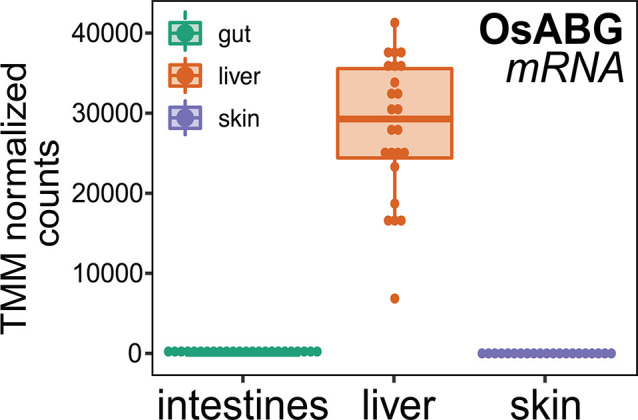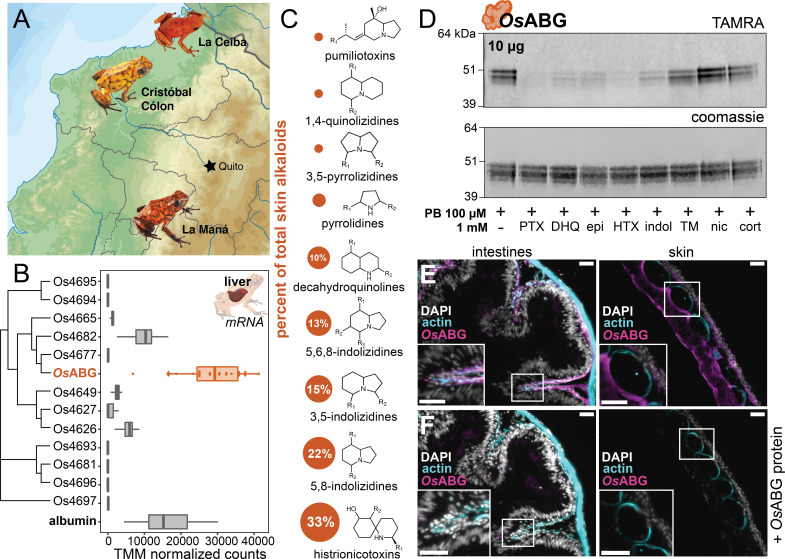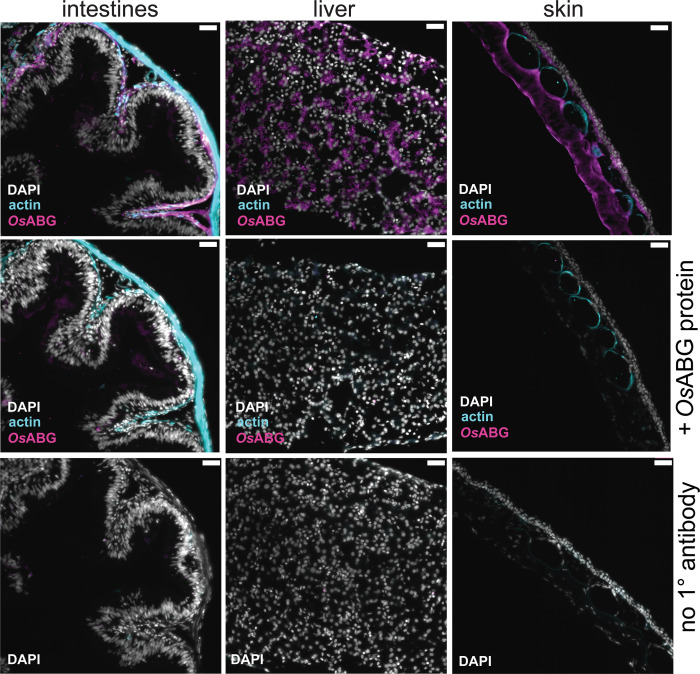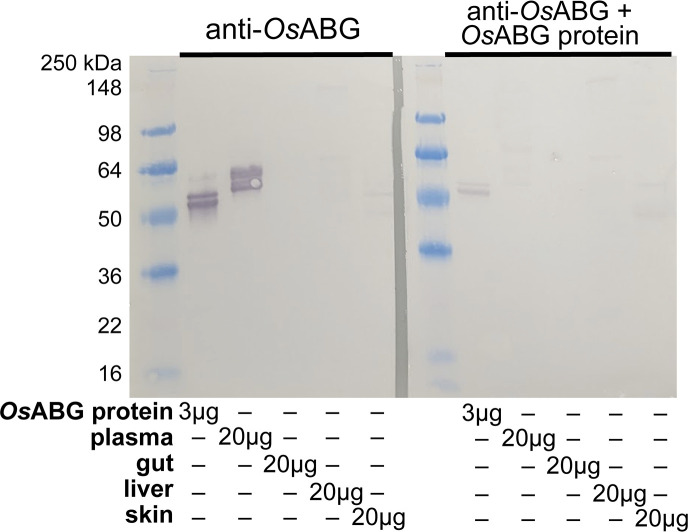Figure 6. OsABG is expressed in the liver and binds ecologically relevant alkaloids.
(A) Wild Oophaga sylvatica were collected across three locations in Ecuador, n = 10 per location. (B) The liver expression level of OsABG was higher than that of other members of the serpinA family found in the genome, and of albumin. (C) Dorsal skin alkaloids fell into nine different classes, with the size of the circle representing the averaged percent of total skin alkaloid load. (D) Photoprobe binding with recombinantly expressed OsABG was competed by pumiliotoxin (PTX), decahydroquinoline (DHQ), epi, a histrionicotoxin-like compound (HTX), and indolizidine ring without R groups (indol), and slightly by a mixture of skin toxins from the wild specimens (TM). Photoprobe binding was not competed by nicotine (nic) or cortisol (cort). (E) Custom anti-OsABG antibody staining (magenta) in the skin and intestines, with actin stain (blue) and 4',6-diamidino-2-phenylindole (DAPI, shown in white). (F) Pre-incubation of anti-OsABG with purified OsABG protein in the skin and intestines shows loss of OsABG staining, indicating specific staining activity. White bars represent 50 μm.
Figure 6—figure supplement 1. OsABG expression in intestines, liver, and skin.




